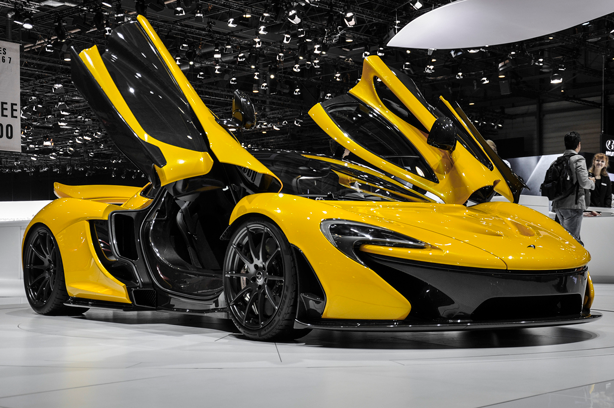By Dessa Bayrock (The Cascade) – Email
Print Edition: January 8, 2014

Since the advent of windshield wipers around a century ago, not a lot has changed in the world of removing rain and grit from car windshields.
But with their 2015 models, luxury car manufacturer McLaren is hoping to kill the windshield wiper once and for all.
It all started with a set of sharp eyes and one question.
“It took a lot of effort to get this out of a source in the military,” McLaren design chief Frank Stephenson told The Sunday Times. “I asked why you don’t see wipers on some aircraft when they are coming in at very low levels for landing.”
He initially suspected it was a coating on the surface of the glass that made the surface too slick for rain and other particles to hang on — something along the line of high-tech Rain-X, perhaps — but the reality turned out to be much more high tech and much, much cooler.
“I was told that it’s not a coating on the surface but a high-frequency electronic system that never fails and is constantly active,” Stephenson told the Times. “Nothing will attach to the windscreen.”
With the military device as a jumping-off point, McLaren replicated the technology and included it in the designs for their 2015 models — deleting the windshield wipers along the way to create a sleeker, cleaner, and more high-tech look for the cars.
McLaren won’t reveal all the technical specs, since they hope to keep an edge over the competition for at least a couple of years, but experts can still make a pretty good guess about how the system works. A device attached to an inside corner of the windshield will produce ultrasonic waves, which will pulse through the glass like vibrations pass through a speaker. This will reflect rain, and also keeps anything else from sticking to the windshield — bugs, dirt, and dust included.
And depending on whether or not the system is active when the vehicle is off, the ultrasonic waves might also mean an end to morning frost on winter mornings; dew wouldn’t even have a chance to settle, let alone freeze.
This also isn’t the first time sonic waves have been used as cleaning agents — ultrasonic baths have been used to clean jewelry and surgical equipment for decades. For instance, when you leave a ring or bracelet to be cleaned, the jeweller will drop them into a fluid bath. The liquid is pummelled with ultrasonic waves, creating a series of vacuum bubbles that release huge amounts of energy when they collapse, which sends mini high-powered jets of water shooting around. The bubbles produced from ultrasonic waves are so tiny that releasing their energy cleans the surface of the jewellery without coming close to harming the metal itself.
Although the $250,000 price tag on a McLaren is enough to make anyone choke on their breakfast, experts suspect lower-budget versions of the device will eventually trickle down to mass market models and become available for any vehicle for about $15 – cheaper than windshield wipers for sure, and probably longer-lasting at that.


